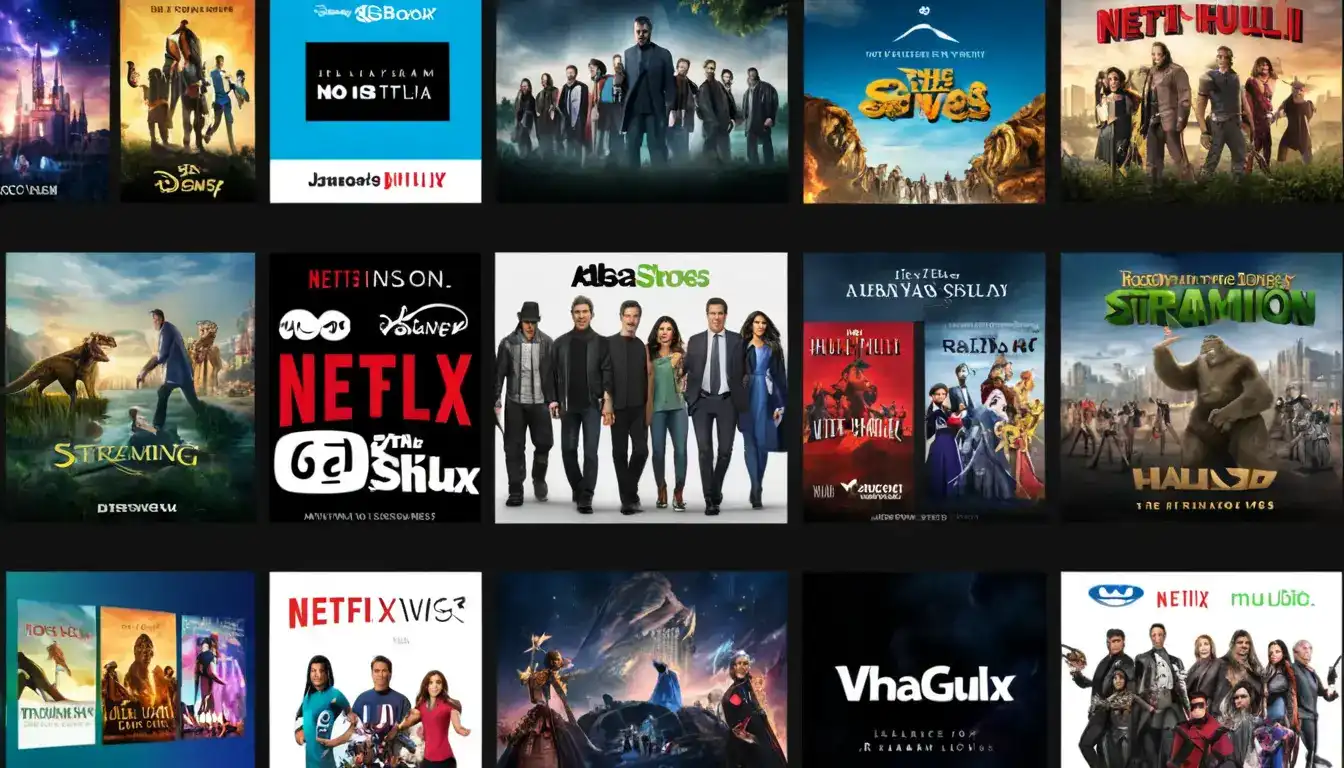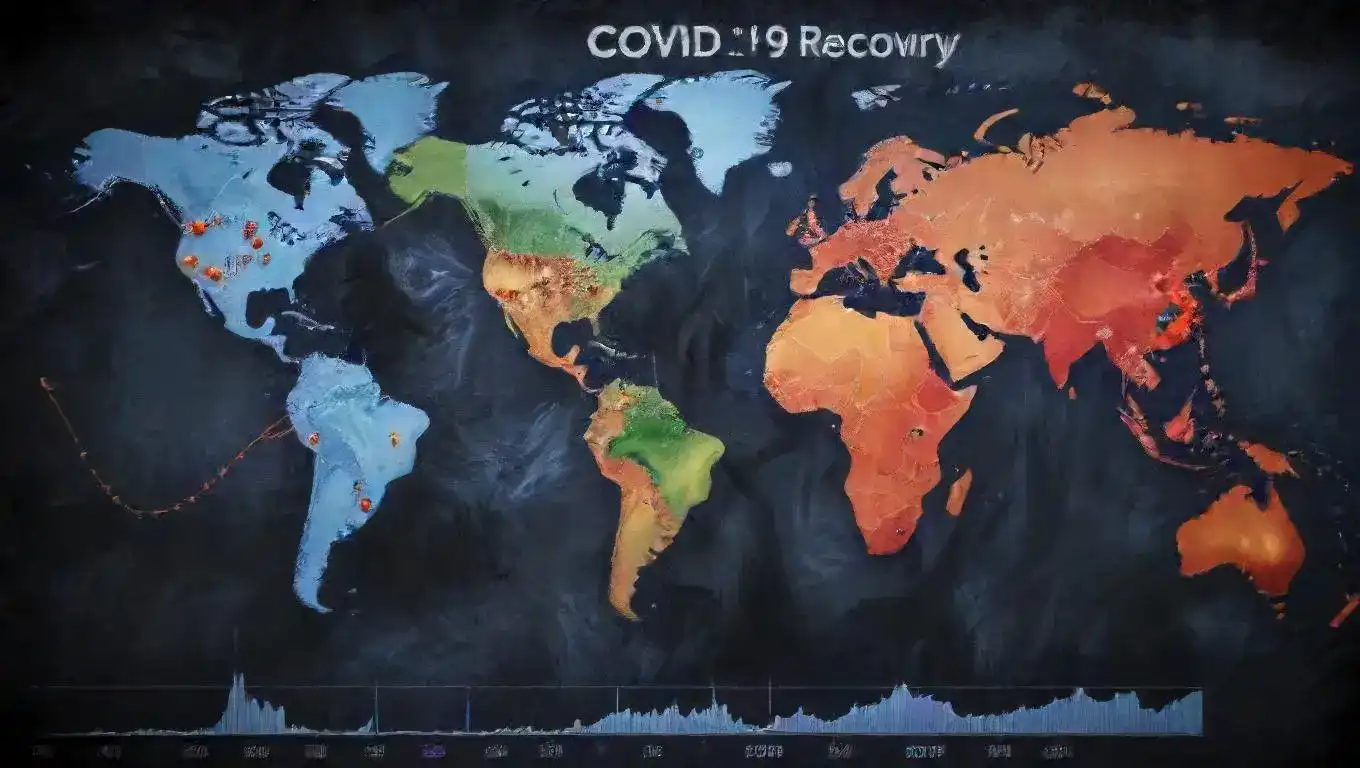Education for All: Ensuring Future Access
Emily Willis

Photo: Education for All: Ensuring Future Access
Education for All: Unlocking a Brighter Future for Everyone
Imagine a world where every child, no matter where they live or what their circumstances, has the chance to learn, grow, and reach their full potential. This isn't just a hopeful dream; it's the powerful vision behind "Education for All." It's about ensuring that future generations have equitable access to quality learning opportunities, shaping not just individual lives but the very fabric of our global society. Education isn't just about textbooks and classrooms; it's a fundamental human right and a powerful engine for progress, prosperity, and peace.
Why "Education for All" Matters More Than Ever
In today's fast-paced world, knowledge is power. A well-educated population is better equipped to innovate, adapt, and contribute meaningfully to society. When we talk about "Education for All," we're advocating for a world where everyone has the tools to thrive, regardless of their background. This universal access to education is crucial for fostering social mobility, reducing discrimination, and building more inclusive societies. It's also a direct pathway to breaking cycles of poverty, improving health outcomes, and promoting gender equality.
Consider these undeniable benefits:
- Economic Growth and Innovation: Countries with higher education levels often see significant boosts in their GDP, and individuals with more schooling tend to earn higher incomes. A skilled workforce drives innovation and keeps nations competitive on the global stage.
- Poverty Reduction: Education empowers individuals with the skills and knowledge needed to secure better jobs, leading to improved living standards and a positive cycle of prosperity.
- Improved Health Outcomes: Educated individuals are generally more aware of health practices, leading to better public health and lower child mortality rates.
- Gender Equality: Ensuring girls have access to quality education can dramatically improve health outcomes, reduce child mortality, and increase women's economic contributions. Despite progress, gender disparities in education persist, making targeted policies essential.
- Peace and Stability: Education fosters understanding, tolerance, and civic engagement, contributing to more stable and peaceful societies.
Navigating the Hurdles: Challenges to Future Access to Education
While the vision of "Education for All" is inspiring, achieving it comes with significant challenges. Many barriers still prevent millions of children and adults worldwide from accessing quality learning.
The Persistent Digital Divide
The rise of digital education has opened incredible doors, offering flexibility and breaking down geographical barriers. However, the "digital divide" remains a major hurdle. Many learners, especially in remote or underserved communities, lack reliable internet access, devices, or the digital literacy skills needed to participate in online learning. This can unfortunately widen existing learning inequalities.
Socioeconomic Disparities
Poverty is a significant barrier. Families in low-income areas often struggle with school fees, the cost of uniforms, books, and supplies, or may need their children to work to earn income. Children from impoverished backgrounds often face academic challenges due to stress, instability, and limited resources.
Geographical Isolation
In rural and remote areas, the sheer lack of educational infrastructure, including schools and safe transportation, makes access incredibly difficult. Children may have to travel long, unsafe distances to reach the nearest school.
Gender and Cultural Barriers
Gender discrimination still prevents many girls from receiving an education due to societal norms, early marriages, and a lack of female teachers. Additionally, minority and indigenous communities can face linguistic and cultural barriers when the curriculum isn't offered in their native language or lacks cultural sensitivity.
Inclusivity for All Abilities
Educational institutions often lack the necessary accommodations and resources for students with disabilities, limiting their access to proper, inclusive education and hindering their potential. Creating truly inclusive environments means addressing diverse needs and ensuring every student feels valued and supported.
Conflict and Crises
War, conflict, and health emergencies can severely disrupt education systems, forcing schools to close and leaving countless children without access to learning for extended periods.
Paving the Way: Strategies for Ensuring Future Access to Education
Overcoming these challenges requires a concerted, multi-faceted approach involving governments, communities, educators, and technology innovators. Here are some key strategies to ensure universal education and future access to quality learning:
1. Embracing Educational Technology and Digital Learning
Digital learning is transforming how education is delivered, offering personalized and engaging experiences.
- Expand Online Learning Platforms: These platforms offer flexibility and convenience, breaking down geographical constraints and making education accessible from anywhere.
- Bridge the Digital Divide: Governments, NGOs, and educational institutions must collaborate to provide technology resources, reliable internet connections, and digital literacy training to underserved communities.
- Leverage AI and Adaptive Learning: Artificial Intelligence (AI) can personalize learning paths, analyze student performance, and provide real-time feedback, catering to individual needs and learning styles.
- Explore Immersive Technologies: Virtual Reality (VR) and Augmented Reality (AR) can offer highly interactive and engaging learning experiences, making complex subjects more accessible.
2. Investing in Equitable Funding and Policy Reform
Adequate and equitable financing is the bedrock of "Education for All."
- Increase Public Investment: Governments must prioritize and significantly increase public spending on education, recognizing it as a fundamental human right and a crucial investment in national development.
- Equitable Funding Allocation: Resources should be directed to areas that need them most, such as low-income regions and marginalized communities, ensuring a more equal distribution of educational funding.
- Financial Support for Students: Scholarships, grants, and subsidies can help alleviate economic barriers for students from low-income families, ensuring they can afford school fees and associated costs.
- Strengthen Legislation: Countries should reinforce legislation to ensure education is a basic, free, and compulsory right for all children.
3. Fostering Inclusive Education Environments
Inclusive education means providing equal opportunities for all students, regardless of their background, abilities, or needs.
- Universal Design for Learning (UDL): Apply UDL principles to create flexible learning choices and accessible classrooms that cater to diverse learning styles and needs. This includes offering varied materials (visual, audio, kinesthetic), breaking tasks into smaller components, and providing alternate ways for students to respond.
- Tailored Support: Provide individualized learning plans and collaborate with special education experts to ensure students with disabilities receive tailored support.
- Cultural Competence: Educators should be trained to address the diverse cultural backgrounds of their students, incorporating diverse perspectives into course content and fostering a culture of respect and understanding.
- Safe and Supportive Spaces: Create learning environments where all students feel valued, supported, and capable of achieving their full potential.
4. Empowering Teachers and School Leadership
Teachers are the single most important factor in achieving quality education.
- Professional Development: Provide ongoing training and support for educators in inclusive teaching strategies, digital literacy, and adapting to diverse student needs.
- Competitive Salaries and Working Conditions: Value and respect teachers by ensuring competitive salaries, manageable workloads, and good working conditions to attract and retain qualified professionals.
- Teacher Recruitment: Address the global shortage of qualified teachers, especially in underserved areas.
5. Strengthening Community Involvement in Education
Community participation is vital for creating effective and inclusive educational environments.
- Collaborative Planning: Engage diverse community members—students, parents, local organizations, and businesses—in decision-making processes regarding educational programs and policies.
- Community-Based Initiatives: Support initiatives like after-school programs, mentoring, and tutoring that provide additional academic support and access to learning opportunities.
- Resource Sharing: Encourage collaborative planning and resource-sharing to maximize limited resources and enhance the overall educational experience.
- Fostering a Sense of Belonging: Community involvement helps create a sense of belonging for students, which boosts retention and academic achievement.
The Ripple Effect: A Brighter Tomorrow for All
The pursuit of "Education for All" is more than just an educational goal; it's a commitment to a more just, prosperous, and sustainable world. When every individual has the opportunity to learn, the ripple effects are profound. Societies become more resilient, economies flourish, and innovation thrives. It’s about building a future where every mind is nurtured, every talent is unleashed, and every person can contribute their unique gifts to the global community. Investing in education is truly investing in humanity's collective future.
Take Action: Be a Champion for Education
The journey to ensuring future access to quality education for everyone is a shared responsibility. We can all play a part in making this vision a reality.
- Support local educational initiatives: Volunteer your time, donate resources, or advocate for better funding in your community's schools.
- Champion digital literacy: Help bridge the digital divide by supporting programs that provide technology and training to those who lack access
Latest ✨
View AllRevolutionize your learning! Data analytics is the future of education, enabling personalized paths & unlocking individual potential.
Emily Willis
Cloud computing is essential for modern businesses, offering cost savings, scalability, and improved collaboration. Implementing cloud computing requires careful planning to ensure safety and efficiency. Tips for safe and efficient implementation include conducting a needs assessment, choosing the right cloud service model, prioritizing security, planning for data migration, optimizing costs, training your team, implementing backup and recovery solutions, monitoring performance, planning for scalability, and staying updated with industry trends.
Emily Willis
effective leadership in a constantly changing world and explores the traits and habits of inspiring leaders, both historical and contemporary. It highlights the key lessons from leaders such as Nelson Mandela, Martin Luther King Jr., Jacinda Ardern, Elon Musk, and Malala Yousafzai.
Emily Willis
Customer feedback is a goldmine for business growth. Learn how leveraging insights enhances products, builds loyalty, and keeps you competitive.
Emily Willis
Business
View All
June 9, 2025
Cloud Computing for Small BusinessUnlock growth & efficiency! Discover how cloud computing empowers small businesses with cost savings & agility in the digital age.
Emily Willis

June 9, 2025
Customer Retention Strategies That WorkUnlock lasting success! Learn proven customer retention strategies to build loyalty, reduce churn, and boost your business growth.
Emily Willis

June 8, 2025
Strategic Planning for Long-Term WinsChart your course to enduring success! This article demystifies strategic planning, offering an actionable framework for long-term wins and sustainable growth.
Emily Willis
Economy
View AllBoost your business profits! Discover actionable strategies to maximize revenue and efficiently manage costs for sustainable growth.
Read MoreUnpack the 17 Sustainable Development Goals (SDGs): a global blueprint addressing poverty, climate change, and inequality for a sustainable future.
Read MoreThe COVID-19 pandemic has had a significant impact on the global economy, leading to market turmoil, disrupted supply chains, and widespread business closures. As countries slowly recover, there are questions about the future of the global economy. While there are signs of recovery, challenges such as rising inflation, uneven global recovery, labor market disruptions, and supply chain bottlenecks remain. To ensure a sustainable recovery, policymakers must continue to support vulnerable sectors, invest in education and reskilling, strengthen healthcare systems, promote supply chain resilience, address inequalities, and prioritize sustainability.
Read MoreEntertainment
View All
August 4, 2024
The Latest Music Trends, Artists Influencing Pop Culture, and How Digital Platforms Facilitate the Distribution of Music GloballyThe music industry is constantly changing due to consumer preferences, technology, and the influence of artists. Digital platforms have revolutionized music creation, distribution, and consumption, leading to genre fusion, the rise of independent artists, and collaborative projects. Influential artists like Billie Eilish, BTS, and Taylor Swift have shaped pop culture globally. Streaming services, social media, and direct-to-fan engagement have transformed music distribution. Digital platforms also promote cultural diversity and inclusivity, expand markets and revenue, and drive technological advancements. The industry is also focusing on sustainability and ethical practices. To succeed in the future, stakeholders must embrace digital transformation and champion inclusivity.
Emily Willis

August 4, 2024
The Evolution of Streaming Services Such as Netflix, Disney+, Hulu, and the Implications for the Traditional Entertainment IndustryThe rise of streaming services has revolutionized the entertainment industry, offering on-demand access to a vast library of content through internet-connected devices. Platforms like Netflix, Disney+, and Hulu have diversified their content libraries, reshaped consumer behavior, and challenged traditional distribution models. Technological advancements have enhanced streaming experiences, while economic and cultural implications have led to global market expansion and increased investment in original content production. The future of the streaming industry will be shaped by competition, convergence of media and technology, and the need for adaptation to changing consumer preferences. Embracing digital transformation and strategic partnerships will be crucial for stakeholders in navigating the evolving landscape of modern entertainment.
Emily Willis

August 5, 2024
Entertainment in Society: Social Impact, Cultural Influence, Economic ContributionsEntertainment is more than just a way to pass the time it has a significant impact on society, culture, and the economy. It promotes empathy, sparks conversations, and drives social change. It reflects and shapes cultural trends, while also preserving traditions. The entertainment industry generates jobs, contributes to economic growth, and drives technological innovation.
Emily Willis
Health
View Allsignificance of mental health awareness in today's fast-paced world. It discusses the importance of understanding mental health, breaking down stigma, and promoting positive mental health practices.
Emily Willis
Regular physical activity is crucial for maintaining long-term health and well-being. It has numerous benefits, including improving cardiovascular health, aiding in weight management, enhancing mental health, strengthening bones, boosting immune function, and promoting longevity.
Emily Willis
The healthcare landscape is being transformed by technological advancements, with telehealth and remote care providing convenient access to healthcare services. Artificial intelligence is revolutionizing diagnostics, personalized medicine, and drug discovery. Wearable technology is empowering patients to take control of their health.
Emily Willis
Trending 🔥
View All
1
2
3
4
6
7
8
9
10
Lifestyle



Sports
View AllAugust 5, 2024
Inclusive Playing Field: Creating a Welcoming and Accessible Sports Environment
Read MoreTechnology
View All
August 4, 2024
The Future of Artificial Intelligence: Opportunities and Challenges
opportunities and challenges presented by Artificial Intelligence (AI) in various sectors such as efficiency, customer experiences, healthcare, education, and economic growth. It highlights the need to address ethical considerations, job displacement, privacy issues, security risks, and regulatory challenges associated with AI.

August 5, 2024
Best AR Apps for Interior Design
Discover the top AR apps for interior design and transform your space with ease! From furniture placement to paint colors, these innovative tools will revolutionize the way you decorate, making your home design dreams a reality

August 5, 2024
Types of Cloud Computing Services Available
Cloud computing has become essential for modern businesses, offering services that streamline processes, reduce costs, and increase flexibility. Understanding the types of cloud computing services available, such as Infrastructure as a Service (IaaS), Platform as a Service (PaaS), and Software as a Service (SaaS), can help businesses make informed decisions.

August 5, 2024
Best AR Translation Apps Tested
Uncover the best AR translation apps on the market through our in-depth testing and reviews. From seamless voice conversations to real-world text translation, these apps will revolutionize the way you communicate across languages.

















